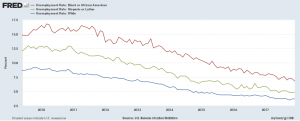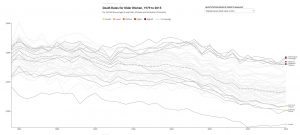The Chicago Booth post, Never mind the 1 percent Let’s talk about the 0.01 percent, provides an insightful summary of income distribution at the top.
an insightful summary of income distribution at the top.
Mankiw noted that the 1 percent’s share of total income, excluding capital gains, rose from about 8 percent in 1973 to 17 percent in 2010, the latest figures available at the time. “Even more striking is the share earned by the top 0.01 percent. . . . This group’s share of total income rose from 0.5 percent in 1973 to 3.3 percent in 2010. These numbers are not easily ignored. Indeed, they in no small part motivated the Occupy movement, and they have led to calls from policymakers on the left to make the tax code more progressive.”
There is detailed exposition on who makes up the top and how they got there. For instance,
Technology, from the internet to media such as ESPN and Bloomberg terminals, has given elite athletes, entertainers, entrepreneurs, and financiers the ability to profit on a much larger, global scale, making the fruits of their labor more valuable than what previous superstars, such as, say, Pelé or Babe Ruth, brought in. Ruth’s peak salary of $80,000 would be worth about $1.1 million in 2016 dollars, around one-thirtieth of the $33 million the highest-paid Major League Baseball player, pitcher Clayton Kershaw of the Los Angeles Dodgers, made in salary alone in 2016.
And hedge-fund managers make multiples more than top athletes and entertainers. James Simons of Renaissance Technologies and Ray Dalio of Bridgewater Associates each made more than $1 billion in 2016, even though, as Institutional Investor’s Alpha reported, the top-25 hedge-fund earners took in the least as a group since 2005, largely because of the industry’s overall poor investment performance.
This is an excellent article about income and how it is distributed, with a number of graphs suitable for QL based courses.
 You can read about the drought on the Climate.gov post Day Zero approaches in Cape Town (Feb 7, 2018) by Michon Scott:
You can read about the drought on the Climate.gov post Day Zero approaches in Cape Town (Feb 7, 2018) by Michon Scott:








